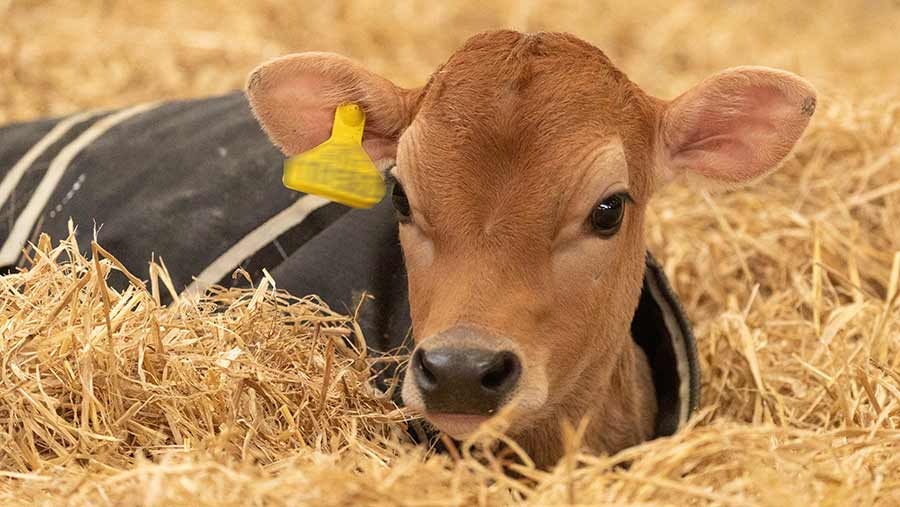7 practical ways to get calves through a cold snap
 © Tim Scrivener
© Tim Scrivener When it is very cold, a calf’s ability to absorb immunoglobulins is challenged because of the direct effects of low temperatures on absorption in the intestine.
Farmers Weekly spoke to Sarah Bolt, Kingshay’s technical knowledge exchange manager, to get tips on how to combat the effects a cold spell has on calf health.
See also: 4 critical control points to improve calf rearing
1. Feed top-quality colostrum
It is even more important than usual that warm (38C), good-quality colostrum is fed to help the calf achieve passive transfer of immunity.
Ideally, within two hours of birth, this means feeding three litres of colostrum that scores 22% or higher on a Brix refractometer. Follow this with another three litres, six hours later, while absorption rates are still good.
2. Increase milk powder concentration
Up to four weeks of age, calves have a lower critical temperature (LCT) of 10-15C. (Older milk-fed calves have an LCT of 5-10C.)
This means that when temperatures drop below this level, calves use up more energy just to keep warm. This compromises growth rates and immunity.
One way to help calves deal with the cold is to feed an additional 50g/day of milk replacer powder for each 5C under the LCT.
The current maximum advisable milk replacer concentration is up to 180g/litre (read your milk replacer guidance), so if more milk is required, and the maximum concentration is already being used, increased volumes of milk will need to be fed.
3. Feed more milk
It is thought calves can digest large milk meals of up to 13% of their bodyweight without evidence of abdominal discomfort, or milk entering the rumen.
Where larger volumes are required, three feeds a day will be necessary. Although this will add to workloads, it should only be a short-term measure.
4. More straw and a dry bed
As calves spend 80% of their time lying down, two fundamentals are providing enough bedding and a dry shed.
Use a “nesting score” as a simple measure to see if adequate straw is being provided.
Calves should always have a score of 3, in cold weather, which means legs are not visible when the calf is lying down. If they are, supply more straw.
Another measurement of calf comfort (all year round) is the “knee test”.
This involves kneeling in the calf pen for 30 seconds to 1 minute. When you stand, your knees should still be dry. If not, look to improve drainage, or provide more bedding.
5. Use calf jackets or heaters
Target jackets and heaters at high-risk calves: those that are very young or sick.
Bulb heat lamps can be used for individual calves, or quartz heaters for group pens.
Make sure they are out of the calves’ reach, because they pose a fire risk.
Quartz linear heaters – like the ones found in pub gardens – might be safer as they can be kept at a higher level.
6. Keep calves in groups
Group housing provides calves with the opportunity to huddle together for warmth, especially at colder times of the year.
The collective body heat generated by the group helps to maintain a comfortable temperature, reducing the risk of cold stress and promoting overall health.
Calves are social animals, and being in a group allows them to interact with each other.
This socialisation is essential for their wellbeing and can help reduce stress levels.
7. Remove draughts
Draughts affect the temperature at which a calf has to burn additional energy to keep warm.
Wind speed should be no more than 0.5m/sec, and the target is 0.2m/sec. An anemometer can be used to measure wind speed (available online for about £15) at calf lying – and standing – height.
To reduce draughts, put straw bales inside the pen (or outside if there is not enough room) and use stock boarding, or quarry belting, to line concrete panel walls for warmth and plug gaps at the bottom of gates.
External walls should be at least 1.2m high. Avoid leaving gates open, or having gaps under gates, both of which can accelerate wind speed.
